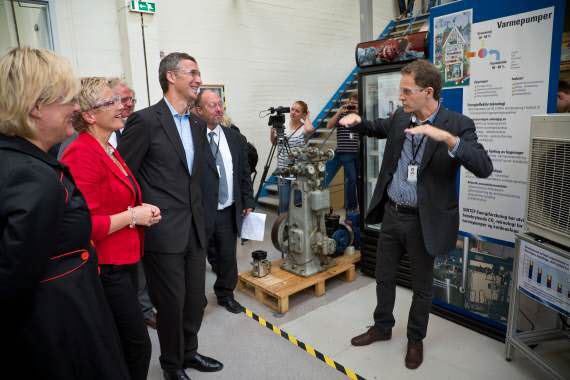
|
|
SINTEF’s Petter Nekså has done much of the pioneering work on CO2 heat-pumps. Here, he describes the environmentally friendly technology involved to ministers Kristin Halvorsen and Liv Signe Navasete and prime minister Jens Stoltenberg. Photo: SINTEF / Thor Nielsen. |
Japan, ten years into the new millennium: instead of using gas boilers to heat their water, two million households and companies are now using special heat-pumps.
The heat-pumps run on technology that has its roots in pioneering work done at SINTEF and NTNU.
Major cuts in emissions
In 2009, according to SINTEF’s calculations these heat-pumps cut Japanese CO2 emissions by 1.1 million tonnes.
The reduction is equivalent to no less than 2.6 percent of Norway’s own CO2 emissions, the same as would be produced by leaving half a million modern cars in the garage.
Cutting CO2 emissions with the aid of CO2
Heat pumps are well-known as a means of saving electricity when they are used for space heating. Most of them transport the heat using special chemicals.
However, a breakthrough in research at NTNU and SINTEF meant that they could instead utilise CO2, one of nature’s own raw materials. This meant low power consumption even when they are producing hot water for washing.
This CO2 does not contribute to the greenhouse gas effect, since it is “borrowed” from industrial flue gases that would otherwise have been discharged into the atmosphere.
Licence sold to Japan
In 2000, a major Japanese company bought the rights to use the Norwegian patent.
Japan uses more hot water than Norway, because of the Japanese habit of taking a hot bath every day. At the start of the new millennium no heat-pump model suitable for Norwegian houses was available; the Japanese ones were too large and expensive.
